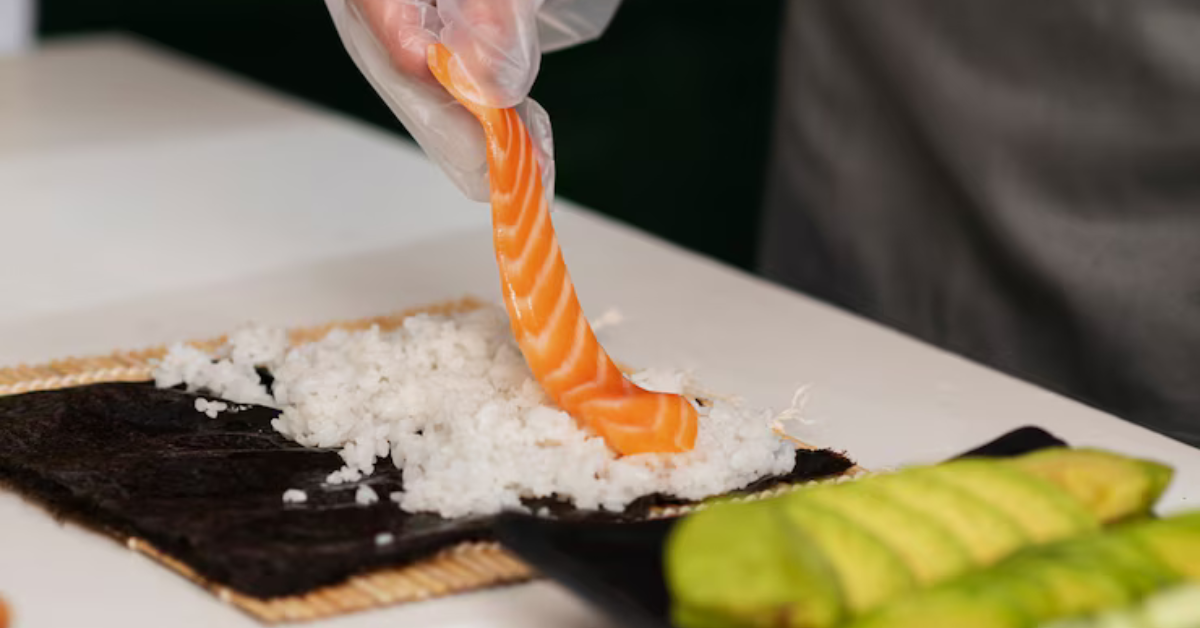Sushi culture is vast and diverse, encompassing a wide array of flavors, textures, and ingredients. While some sushi lovers are drawn to high-end options like toro or uni, others appreciate the simpler, more accessible varieties that still deliver satisfying taste and quality. One such option is izumidai.
Often served in sushi restaurants around the world, izumidai may not enjoy the same fame as tuna or salmon, but it plays an important role in making sushi accessible to a wider audience. In this article, we will take a deep dive into what makes izumidai unique, how it’s prepared, and why it has become a staple in both traditional and contemporary sushi menus.
What Is Izumidai?
Izumidai refers to tilapia, a freshwater fish that originates from Africa and the Middle East. In Japanese culinary usage, the name izumidai is commonly applied to the tilapia fillet used in sushi and sashimi. The fish is processed in a way that highlights its white, slightly firm flesh and mild flavor.
Unlike higher-cost sushi ingredients that are caught wild, izumidai is usually farm-raised. This makes it a consistent and budget-friendly option that chefs can depend on, especially in regions where importing traditional Japanese fish varieties may be cost-prohibitive.
Origins of Izumidai in Japanese Cuisine
Though tilapia is not native to Japan, its use in Japanese-style cuisine is a result of globalization and the rising demand for accessible sushi ingredients. As sushi gained international popularity, chefs began experimenting with locally available or farm-raised alternatives to traditional species. Izumidai filled this niche effectively.
The term itself is derived from “Izumi,” which can refer to a Japanese place name or the word for “spring” (as in freshwater), and “dai,” which commonly refers to sea bream-like fish. While izumidai is not sea bream, its flesh texture and appearance make it a suitable substitute in sushi settings.
Table: Overview of Izumidai Characteristics
| Attribute | Details |
| Common Name | Tilapia |
| Japanese Name | Izumidai (イズミダイ or 泉鯛) |
| Habitat | Freshwater (mostly farm-raised) |
| Typical Preparation | Sushi, sashimi, nigiri, grilled |
| Texture | Firm, flaky |
| Taste | Mild, slightly sweet |
| Price Range | Affordable |
| Commonly Served As | White fish sashimi or nigiri |
Why Sushi Chefs Use Izumidai
1. Cost-Effectiveness
Izumidai is significantly more affordable than high-end options like otoro or hamachi. For sushi chefs managing cost without compromising on freshness or presentation, it’s a go-to ingredient.
2. Versatility
The mild flavor of izumidai makes it a flexible addition to many types of sushi, from nigiri to rolls and even seared options. It also holds up well to sauces, garnishes, and marinades.
3. Appearance
When sliced correctly, the fillets have a clean, white look with slight pink lines—ideal for visual appeal. It adds contrast and variety on a sushi platter.
How Izumidai Is Prepared for Sushi
Izumidai is typically filleted, flash-frozen for safety (especially when used raw), and then sliced thinly for sushi or sashimi. The preparation can vary based on how it’s being used:
- Nigiri: Thin slices of izumidai are draped over vinegared rice and may be finished with a dab of wasabi underneath.
- Sashimi: Served as simple, clean cuts with no rice, typically accompanied by daikon radish and soy sauce.
- Seared or torched: Lightly searing izumidai brings out its natural oils and creates a contrast between the outer and inner textures.
- Marinated: In some dishes, izumidai is marinated in citrus or soy-based sauces to enhance its flavor profile.
Nutritional Benefits of Izumidai
Izumidai is not only affordable and versatile but also healthy. It is a lean source of protein and low in fat, making it suitable for various diets.
Nutritional Profile (Per 100g Serving)
| Nutrient | Amount |
| Calories | ~96 kcal |
| Protein | ~20.1 g |
| Fat | ~1.7 g |
| Carbohydrates | 0 g |
| Omega-3 Fatty Acids | ~135 mg |
| Cholesterol | ~50 mg |
Comparing Izumidai with Other Sushi Fish
| Fish Type | Flavor Profile | Cost Level | Texture | Best Use Case |
| Izumidai | Mild, slightly sweet | Low | Firm, flaky | Budget sushi & rolls |
| Tuna (Maguro) | Rich, meaty | Medium to high | Soft, dense | Sashimi, nigiri |
| Salmon (Sake) | Buttery, oily | Medium | Smooth, fatty | Nigiri, rolls, sashimi |
| Sea Bream (Tai) | Clean, delicate | High | Light, firm | Sashimi, ceremonial dishes |
Sustainability and Aquaculture
One of the reasons izumidai is widely accepted in the global sushi community is its sustainable production. Tilapia is a hardy fish that grows quickly and requires relatively low resources compared to other species.
- Environmentally Friendly: Uses less feed and produces fewer emissions
- Widely Available: Grown in over 135 countries
- Ethical Farming Options: Certified farms adhere to responsible aquaculture practices
Consumers looking for sustainable seafood options can usually find responsibly farmed izumidai certified by organizations like the Aquaculture Stewardship Council (ASC).
Culinary Trends: Izumidai in Fusion Cuisine
Beyond traditional sushi, izumidai is appearing in innovative culinary settings:
- Ceviche: Used in Latin American-inspired sushi rolls or bowls
- Sushi Burritos: As a white fish option with spicy mayo and avocado
- Sushi Pizza: A base of crispy rice topped with thin slices of izumidai
- Tropical Rolls: Combined with mango or pineapple for a sweet-savory twist
Chefs enjoy working with it due to its neutral base, which pairs well with bold flavors.
Safety and Quality Considerations
Because izumidai is farm-raised and widely distributed, ensuring its safety is crucial, especially when consumed raw. Consumers and restaurateurs should look for:
- Flash-frozen labeling: Indicates parasite-safe handling
- ASC or BAP certifications: Reflects ethical and environmental standards
- Fresh smell and appearance: A clean, slightly pinkish-white flesh with no fishy odor
If unsure about raw consumption, choosing cooked or seared izumida’i is a safer option.
Izumidai in Global Sushi Culture
As sushi continues to evolve outside Japan, affordable ingredients like izumidai have helped democratize this once-elite cuisine. From strip mall sushi bars in the U.S. to conveyor belt sushi in Singapore, izumida’i is a quiet but essential contributor to the global sushi movement.
Its adaptability, sustainability, and affordability ensure that it will remain a staple ingredient for years to come.
Conclusion
Izumidai may not have the luxury status of toro or the dramatic presentation of uni, but it offers something equally important: accessibility. It allows more people to enjoy quality sushi without breaking the bank and opens the door for creative culinary exploration.
Whether you’re a sushi novice or a seasoned enthusiast, izumida’i is a worthwhile addition to your next sushi experience—whether at a restaurant or in your own kitchen.
Frequently Asked Questions
Is izumidai real fish or imitation?
It is real fish, made from freshwater tilapia, not an imitation or processed product.
Does izumida’i taste fishy?
No, it has a very mild flavor, which is why it’s favored by those who are new to sushi or prefer subtle tastes.
Can izumida’i be cooked?
Yes. While commonly used raw in sushi, it is also suitable for grilling, steaming, and baking.
Is izumida’i safe to eat raw?
When sourced and handled properly—flash-frozen for safety—it is considered safe for raw consumption.
Is izumida’i high in mercury?
Tilapia species, including izumida’i, generally have low mercury levels, making it a safer option for frequent consumption.







